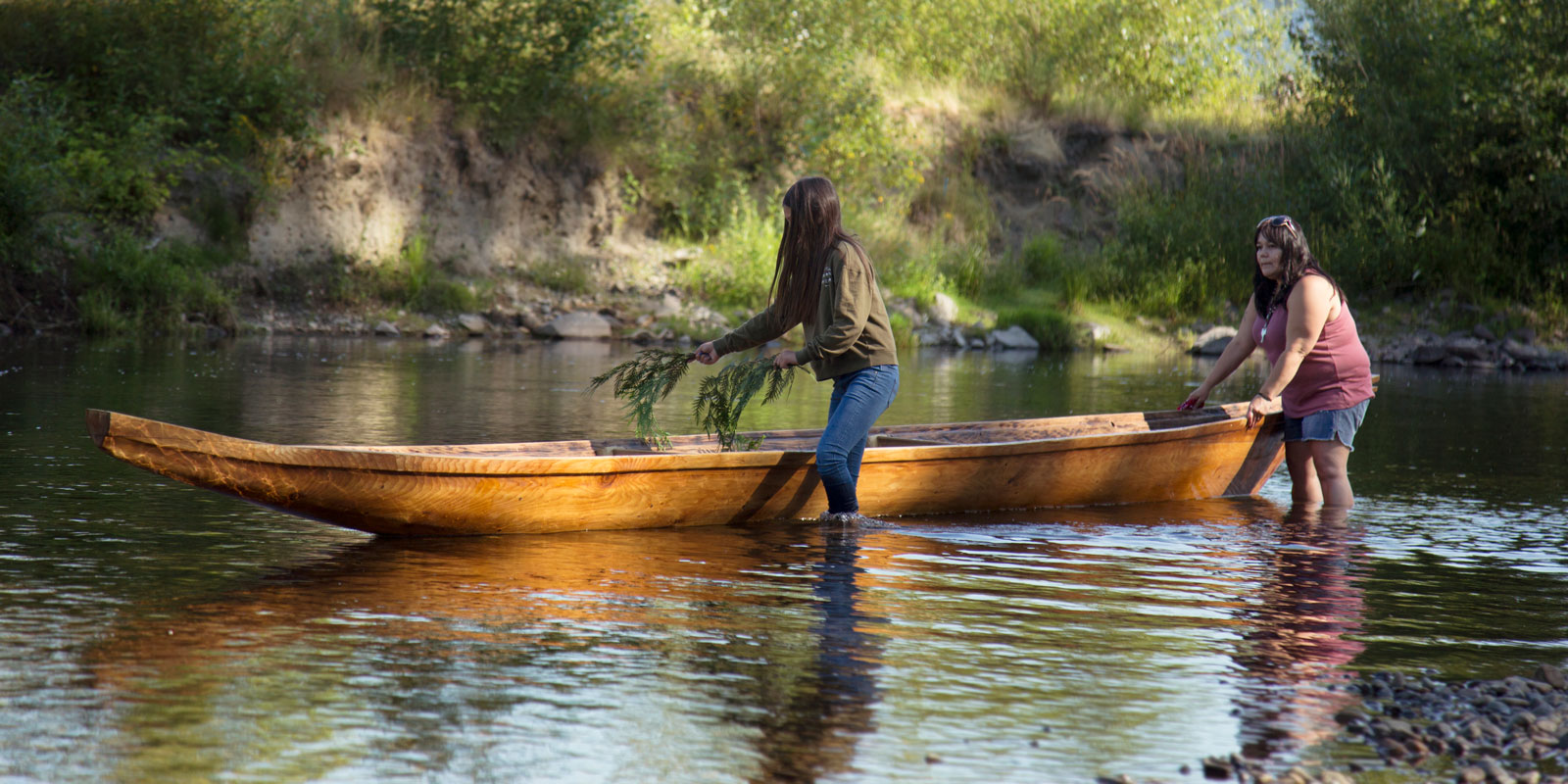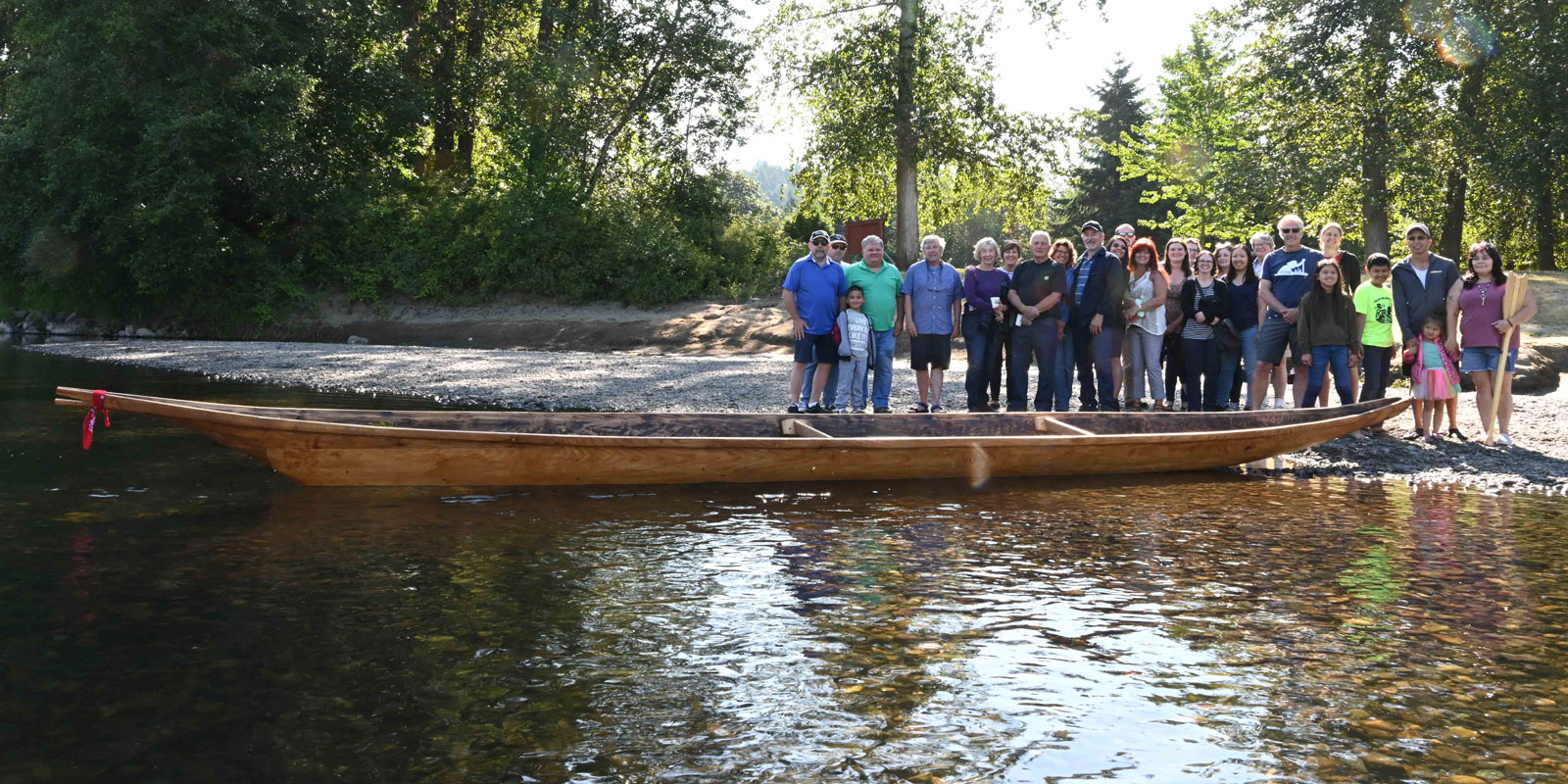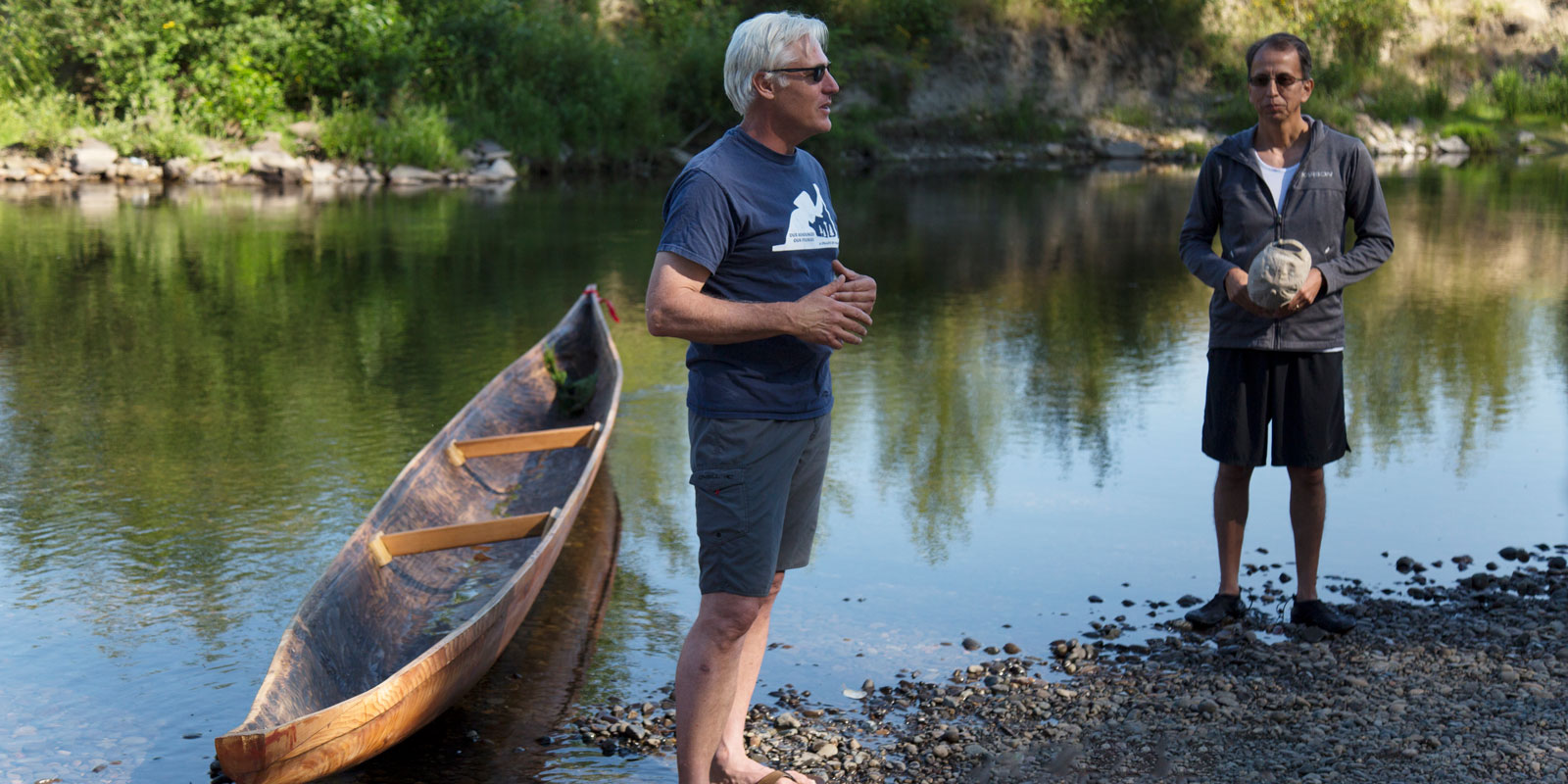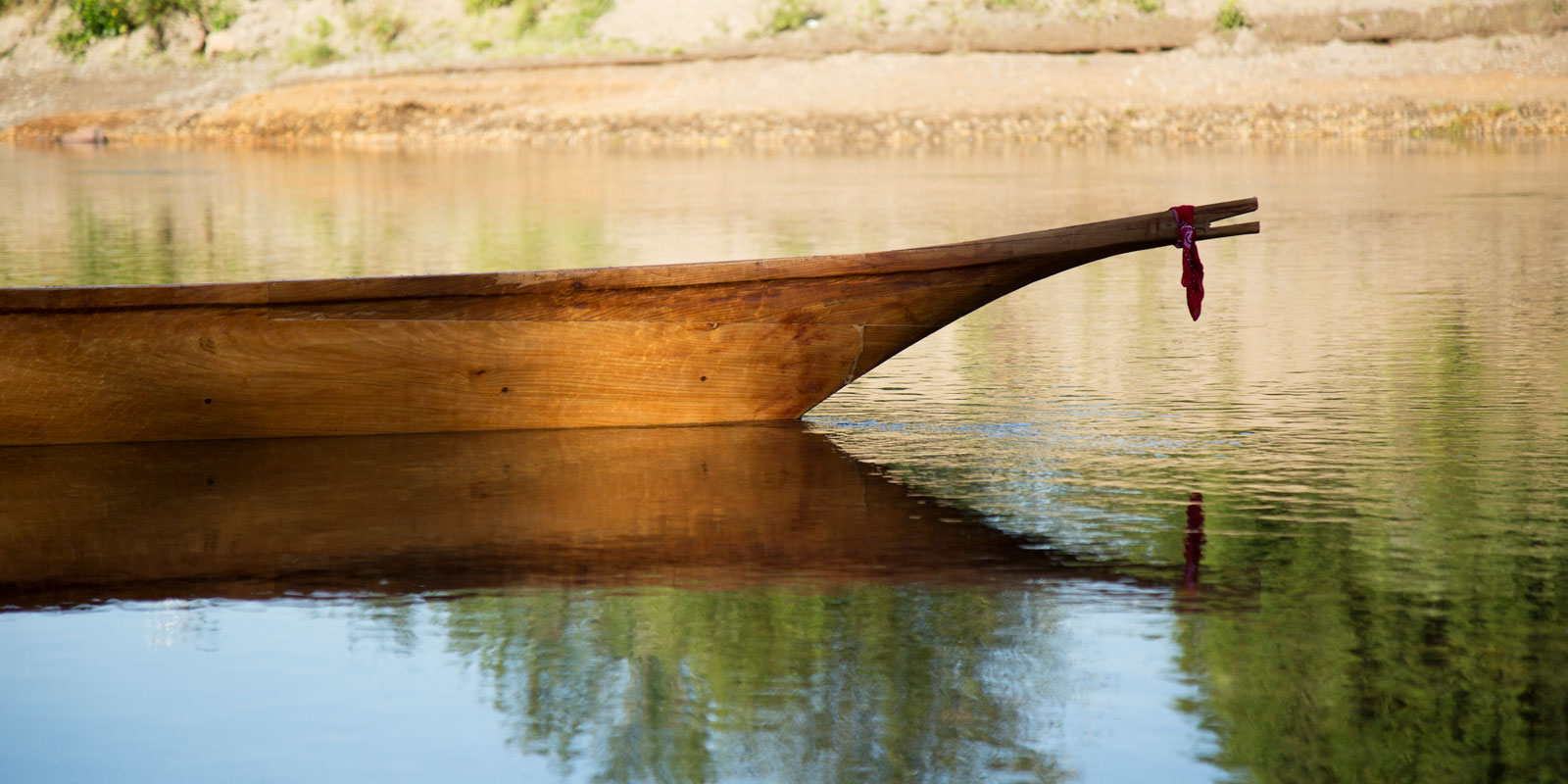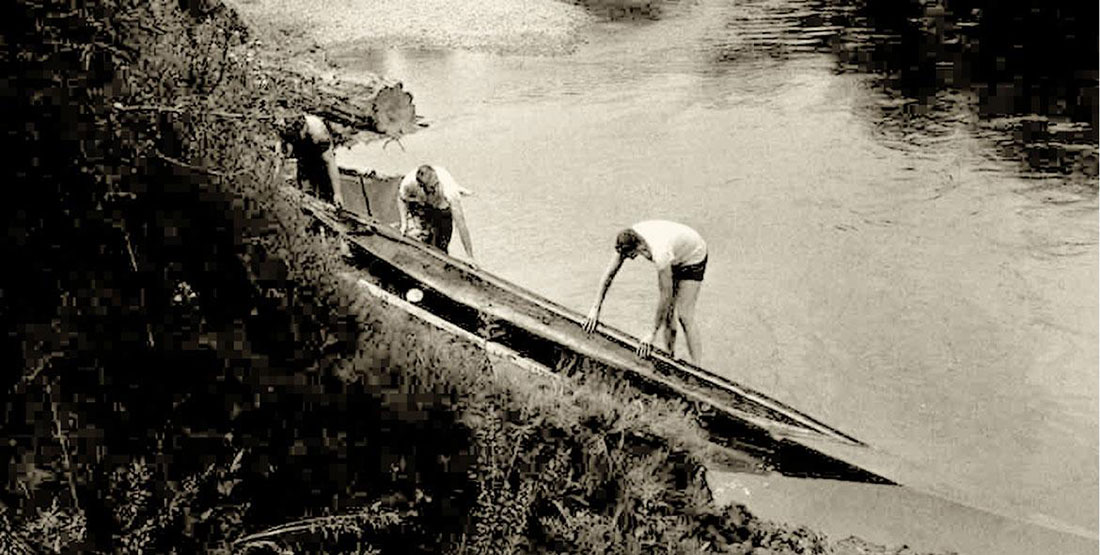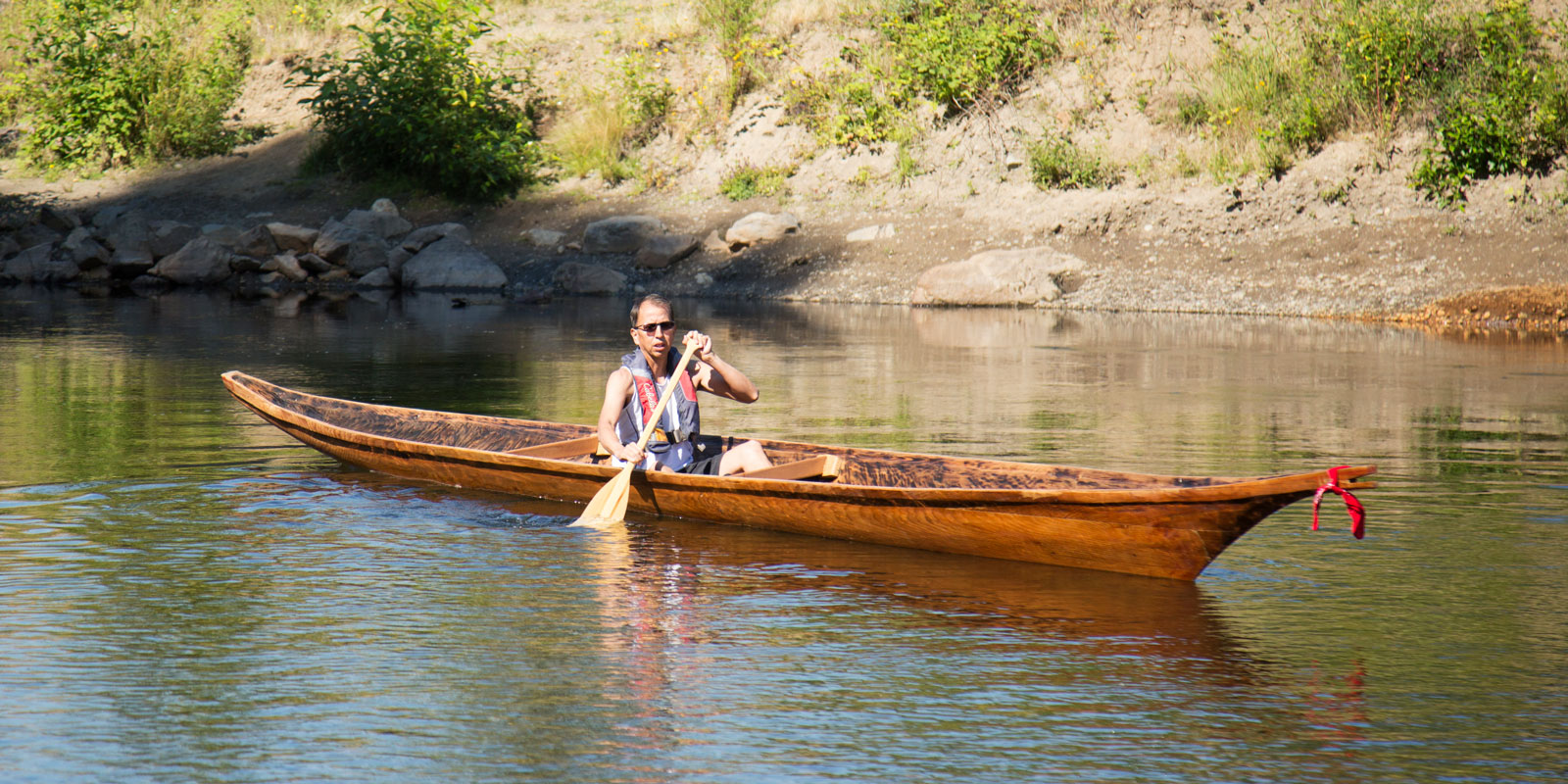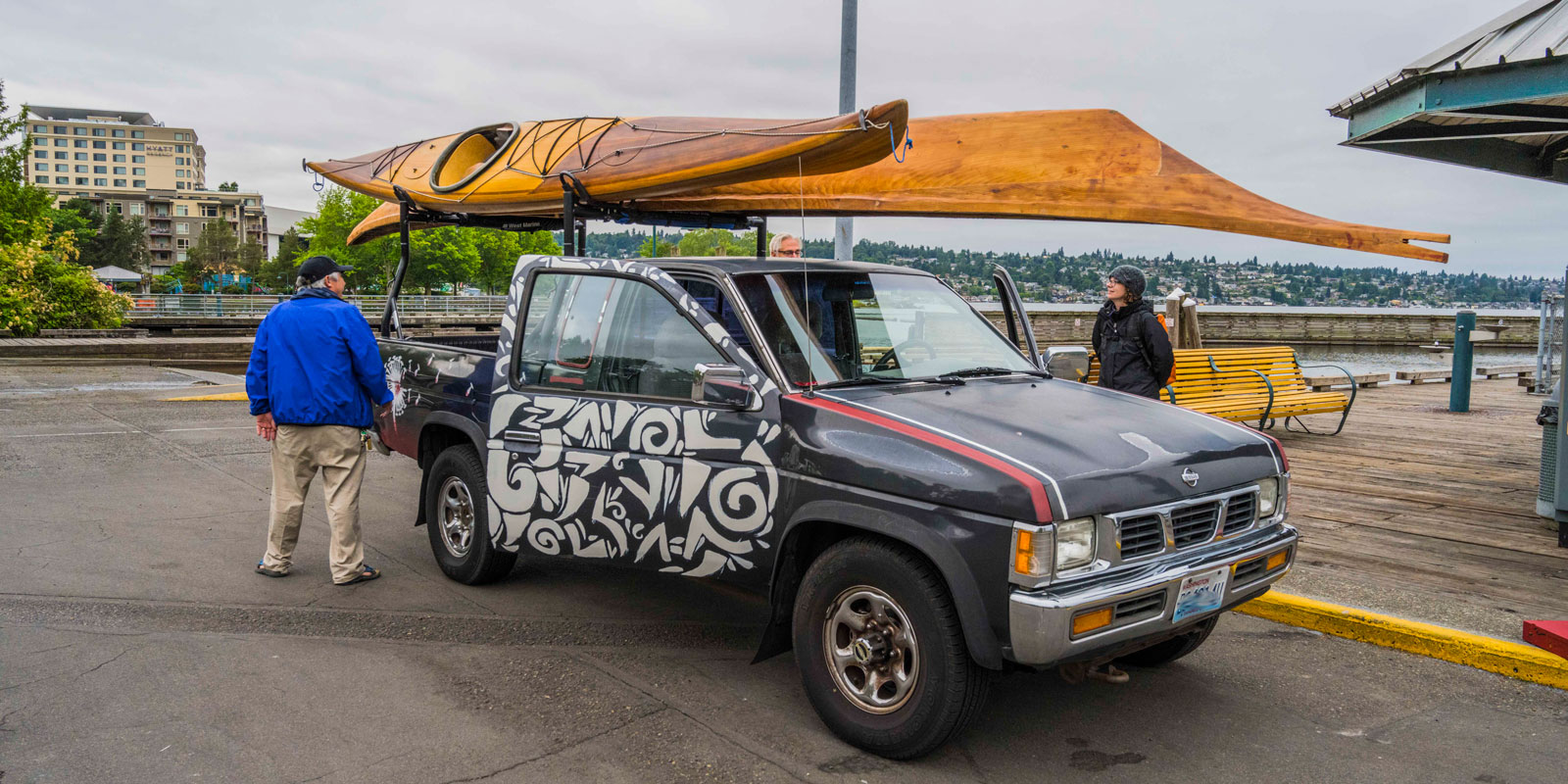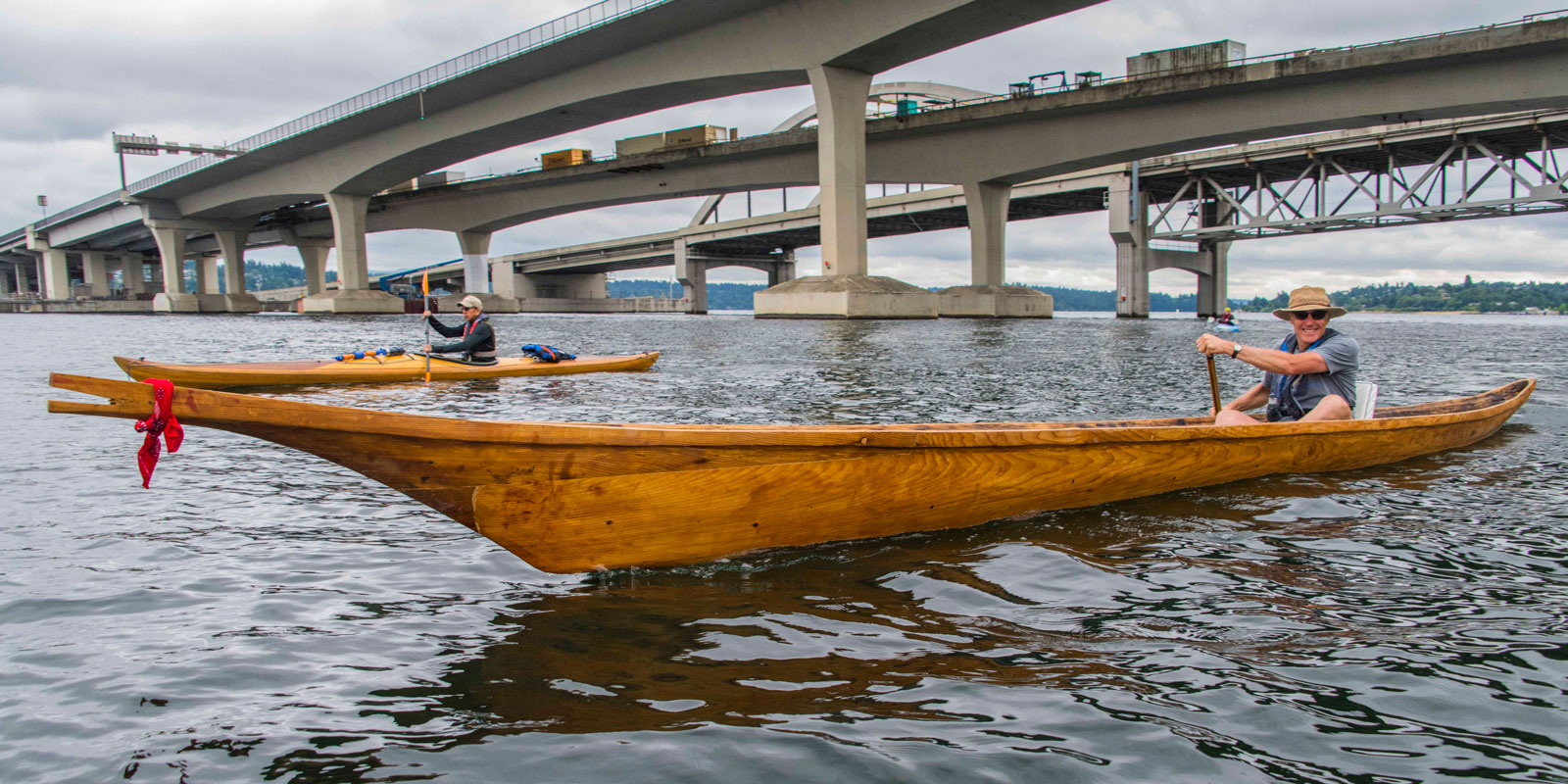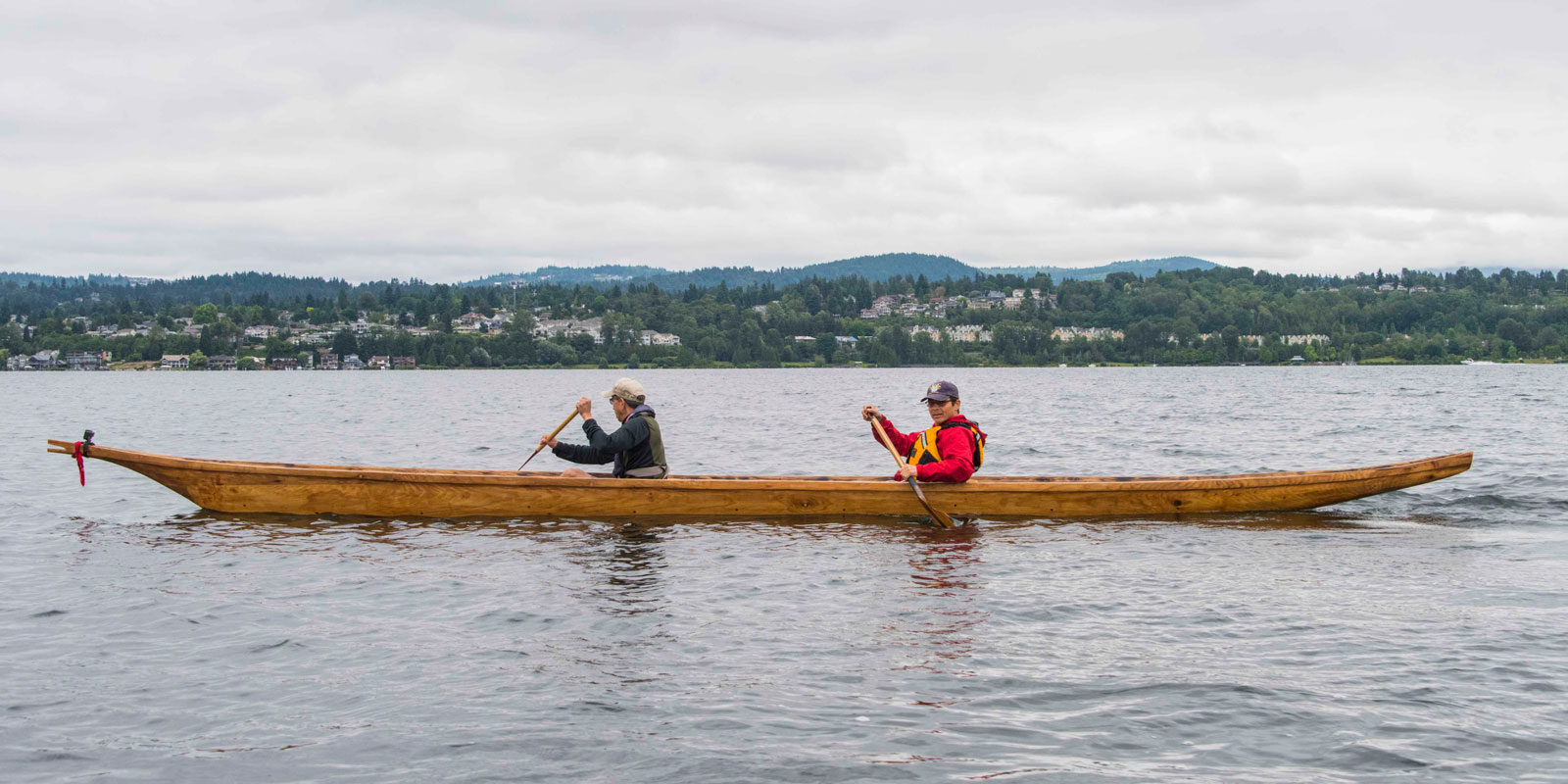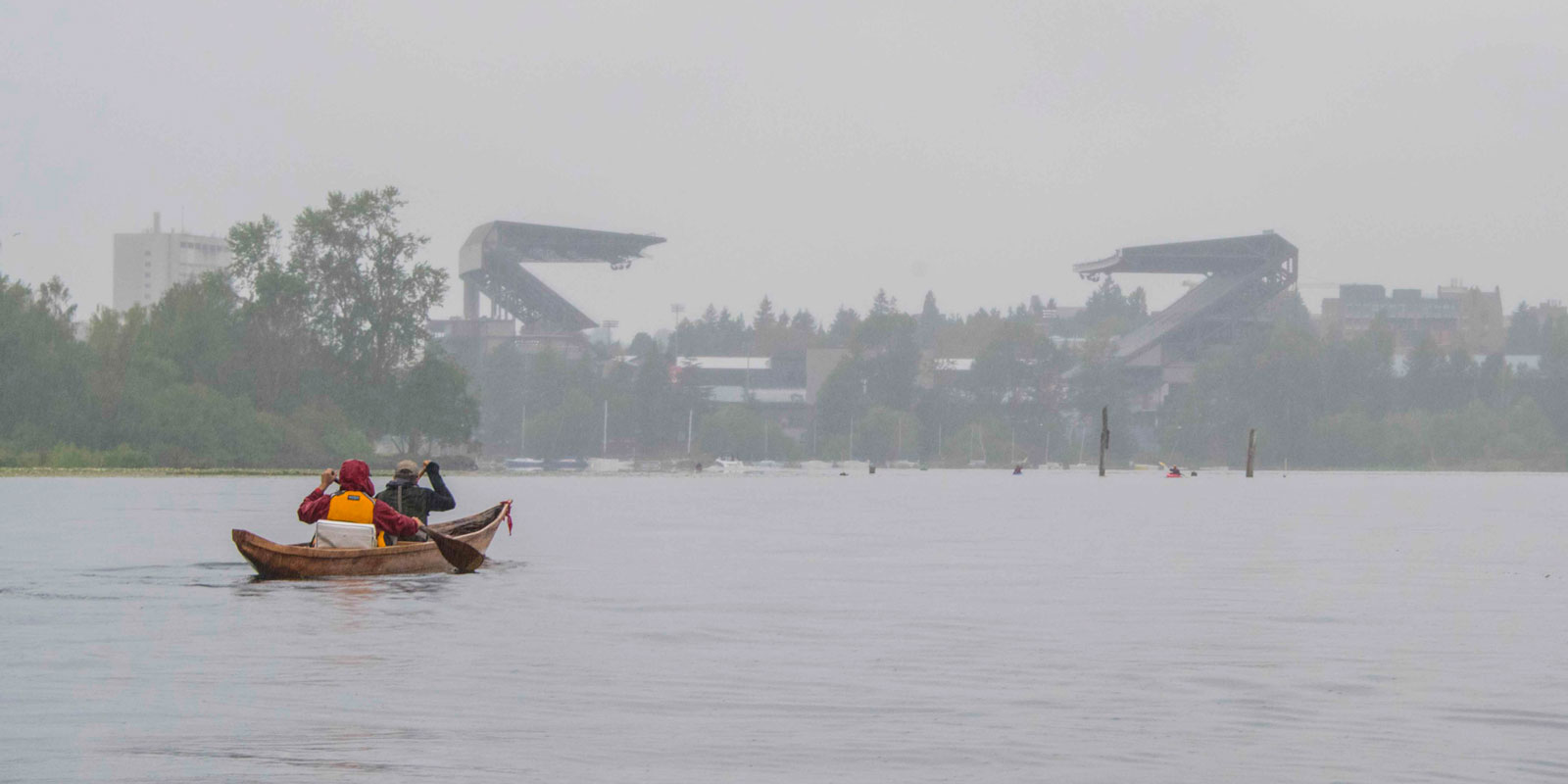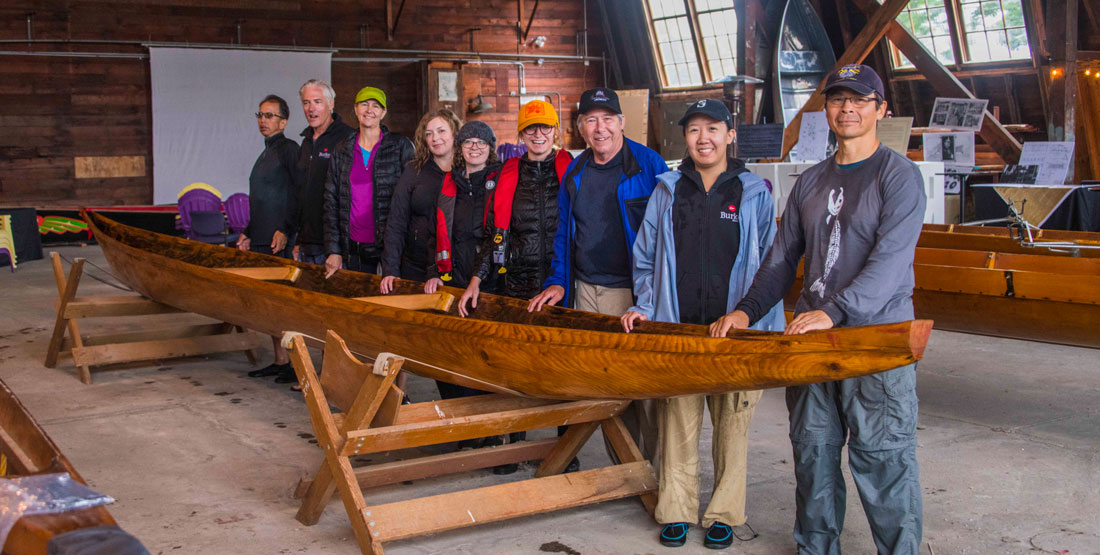Witnessing the launch ceremony, led by Elizabeth Swanaset King George, the daughter of carver George Swanaset Sr., and her granddaughter Kalena Delgado, were members of the Portman and Monstad families. The Portmans farmed the property where the original s.dəxʷìł was found. Their next door neighbor, 10-year-old David Monstad, found the canoe sticking out of the muddy banks of the river in July 1963.
The canoe became part of the Burke’s collection at that time and was later identified as an unusual type of river canoe called s.dəxʷìł. In 2016, a team of Cultural staff from the Burke Museum and Muckleshoot Indian Tribe launched a project to study, document, and 3D scan the canoe thanks to grants from the Traditional Small Craft Association and 4Culture.
Using those 3D prints and detailed plans of the original, and a cedar log donated by the City of Seattle from the Cedar River Watershed, George Swanaset Sr. (Nooksack) carved the replica, which was completed in late 2018.
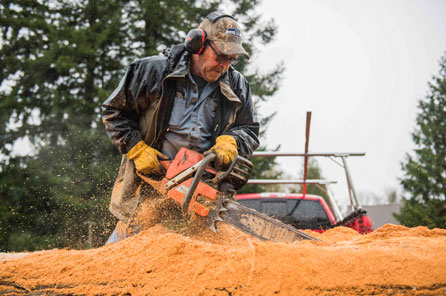
George Swanaset Sr. (Nooksack) cuts into a massive cedar log while replicating the s.dəxʷìł canoe.
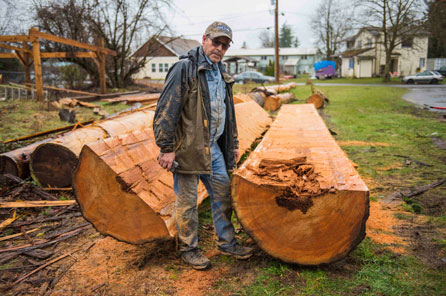
George Swanaset Sr. (Nooksack) after splitting the massive cedar log.
Burke and Muckleshoot researchers have determined that the original s.dəxʷìł was carved in the early 1800s, and was in use until the 1850s or later when it was left behind on the river bank. Radiocarbon dating of the hull puts construction before 1840.
Listen: s.dəxʷìł
Listen to Warren KingGeorge (Muckleshoot) say the Lushootseed word "s.dəxʷìł."
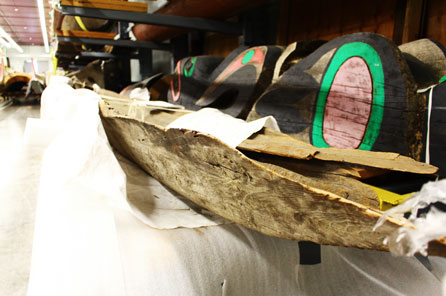
The original s.dəxʷìł in the Burke Museum collection.
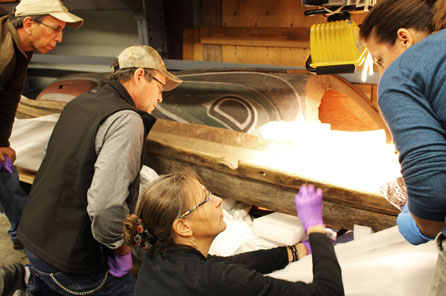
Warren KingGeorge, George Swanaset Sr., Laura Phillips of the Burke Museum, and Jennie Shaw study the s.dəxʷìł canoe.
The canoe has two types of repairs to cracks done sometime in its life. One set is done with cedar root, where the crack is “sewn” together, while another set is done with square shank iron nails, which were available in the Green River area after about 1850.
After launching, Muckleshoot Tribal Historian Warren KingGeorge and a crew of Burke Museum staff set off to paddle the s.dəxʷìł to a new home at the ASUW Shell House on the UW campus, a two day trip. We paddled by the 1963 find spot on our way down river, accompanied by numerous kingfishers.
In the 1800s, we could have paddled down the Green River, to the Black River and then to Lake Washington and the UW campus area. Since the lowering of Lake Washington in 1916, the Black River no longer exists, so our crew made an overland portage (by truck) to the shores of Lake Washington, then paddled north to Union Bay.
The s.dəxʷìł handled beautifully. Stable and fast, it did well with one or two paddlers. Its rounded stern hull shape is ideal for river currents, and its high bow can take waves and keep occupants and cargo dry. This was tested in day two, when Seattle’s notorious fickle early summer weather gave us a torrential rain and a strong south wind for the lake part of the trip.
Next, we hope to carve traditional 19th century style paddles and weave tule or rush seat cushions, take more paddling trips, and learn more from this ancient canoe that has come back to life.
Read the first article: "Ancient Coast Salish canoe project launches."
